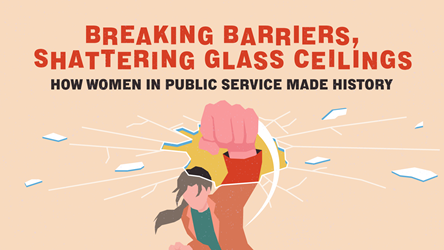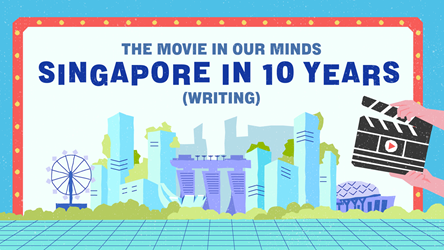Designing Policies, with Citizens Input
-of-designing-policies.jpg)
If you think that a sure-fire way to foster relationships among residents in a community is to organise big events with door gifts and goodie bags, think again. In fact, the bigger the event, the tougher it may be for citizens to get to know each other and build genuine connections. After the events end, they are back to being strangers again.
This was one of the insights that public officers working on Project Love Punggol – which aimed to create a living experience that residents can take pride in – surfaced after conducting ethnographic interviews with the citizens. Project members met with a wide range of residents to hear their stories and understand what it takes for them to feel attached to the community.
Hearing first-hand from citizens and using design thinking, which begins with understanding who you are designing for, has changed how Deputy Director (Community & Outreach) Brandon Low from the National Environment Agency (NEA) approaches issues at work. In design thinking, officers listen attentively to citizens with an open mind. These conversations help them to draw out citizens’ underlying needs, which are often unspoken.
As part of the Project, Mr Low and a team of officers from NEA, People’s Association and the Housing and Development Board spent hours having small group conversations in residents’ homes, which may occur even late at night. This is a far cry from tradition, where public officers tend to rely on desktop research, statistics and focus group discussions to discover citizens’ needs. With these conventional methods, officers could be biased with answers they already have and fixed ideas of what citizens need. The result of this – they may end up not recognising the real issue, much less address it.
“Design thinking provides a different perspective by allowing us to hear from our audience first, rather than telling them what we want,” says Mr Low.
Lending a hand to officers working on the Project is THE Lab at the Public Service Division, PS21 Office. The team uses design thinking to help agencies deliver – as their name suggests – more human-centred solutions in public policies and services.
The team comprises Design Leads Debbie Ng, Andy Hue, Jason Leow and Leon Voon, and Communications Designer Sheriza Faisal. Drawn from diverse backgrounds such as engineering, psychology and economics, these experienced design practitioners share a passion and belief in the potential of design to improve public services.
Different strokes for different folks
One of the shifts THE Lab is nudging public agencies to make – a one-size-fits-all, cookie-cutter approach to policy and service design needs to be changed to one that considers the very different needs and aspirations of citizens today. “The way we have been working in the past where we design for the average citizen will no longer suffice,” says Mr Hue.
-of-designing-policies.jpg)
prototypes made for residents in Punggol.
Instead of grouping Punggol residents according to housing type or demographics, THE Lab characterised the different types of core needs and behaviours of residents into six “personas”. Grouping residents this way helps public officers better understand how to engage with different resident “types”. The “Mr Privy” persona, for example, values his privacy, and would most likely prefer email communication to home visitations.
The Project was originally initiated to clean up a problem Punggol residents faced – the new town was plagued with littering and dog waste in common spaces. To get to the root of the issue, officers had to understand the residents’ behaviour, sense of pride, and motivations for taking the initiative for their environment.
“I get a better sense of the feelings that citizens have, and whether any outreach programme we plan to roll out will be effective,” says Mr Low.

Heart at work with citizens
Recognising that citizens increasingly want a greater stake in shaping their future and Singapore’s progress, THE Lab aims to shift public officers’ mindset from a “we know best” attitude to one of co-creating and co-designing with citizens. One way to involve citizens more is to create simple low-cost prototypes to get quick feedback.
For example, to help Punggol residents better visualise mobile apps and websites for their community, the officers created cardboard models of a smartphone and laptop. Attached to the models are sheets of paper representing features of the apps and websites. Residents can then “modify” the features easily on the spot. The prototyping and testing process is repeated until a final solution is reached.
“Prototyping allows us to make mistakes, and fail fast and early, rather than fall flat on our faces later,” quips Ms Ng.
Needing leaders’ support
With a holistic view of citizens’ needs, public officers should be better equipped to look at issues that often cut across agencies.
But with their less than conventional way of working, THE Lab members know they have to convince their leaders – more used to relying only on hard facts and statistics – of the merits of design thinking.
“Without leaders’ support, it is very difficult for people on the ground to practise or believe in design, or at least be inspired,” shares Mr Voon.
Are you listening, boss?
- POSTED ON
Jul 24, 2013
- TEXT BY
Siti Maziah Masramli









